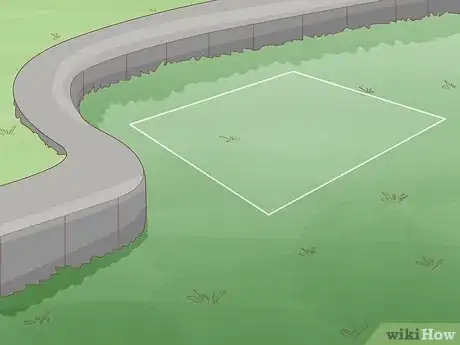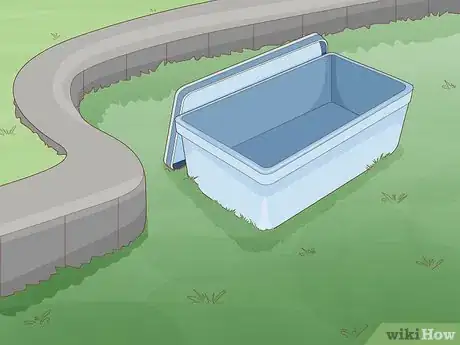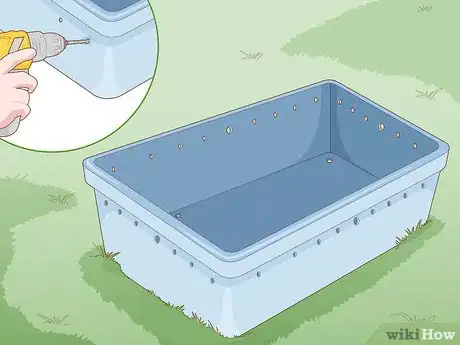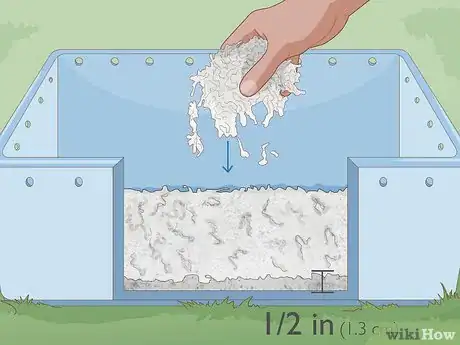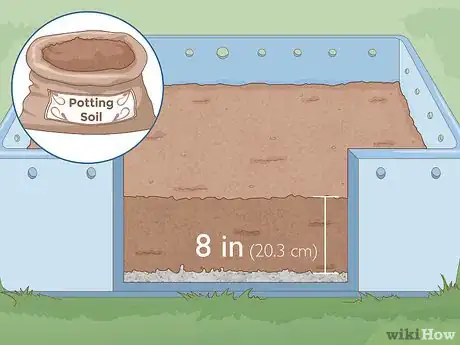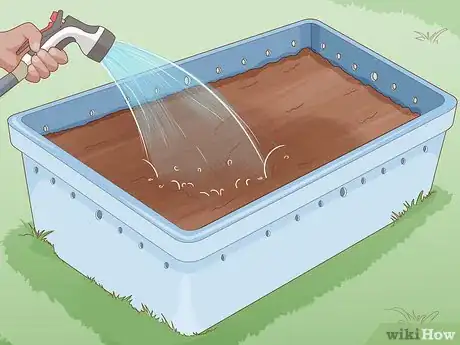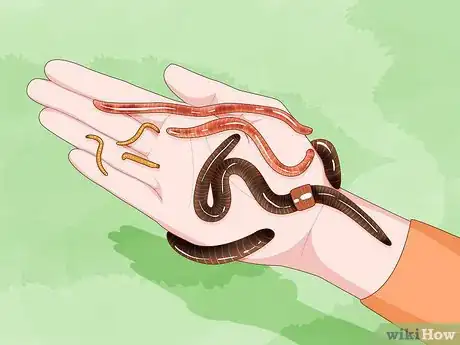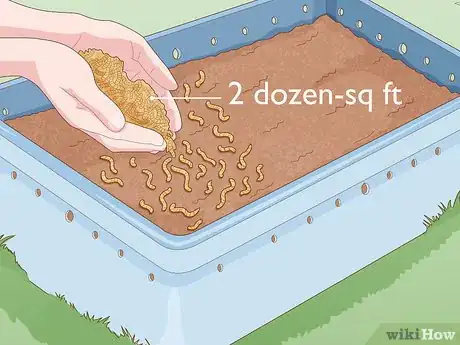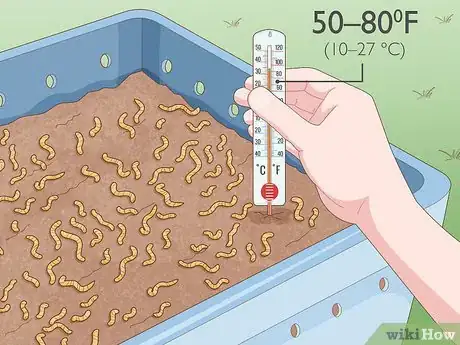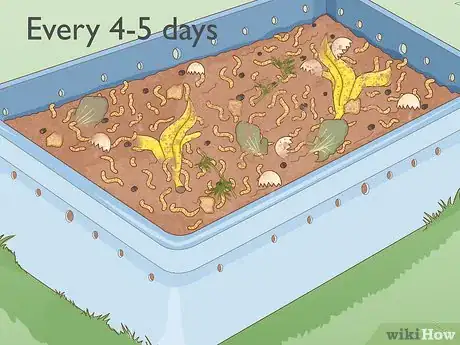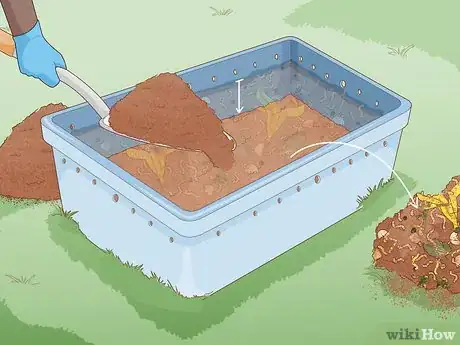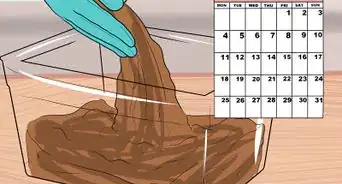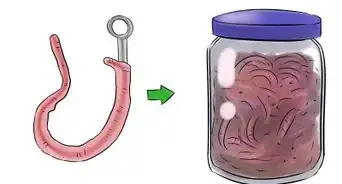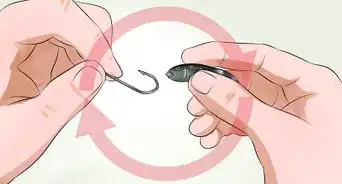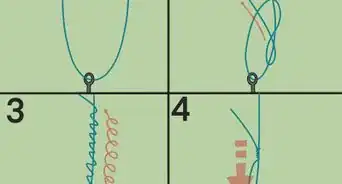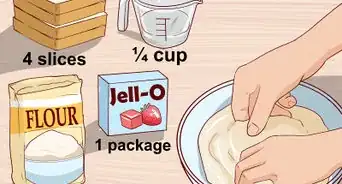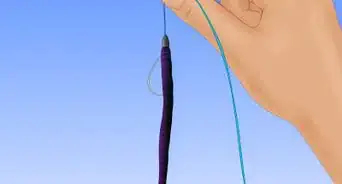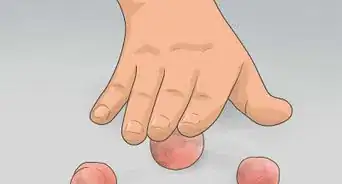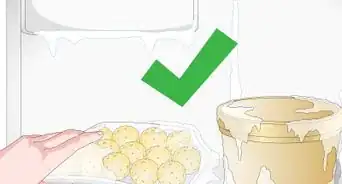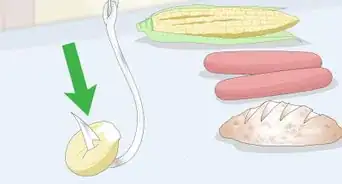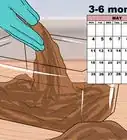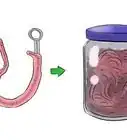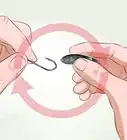This article was co-authored by Michael Reynolds. Michael Reynolds is a Professional Fishing Instructor and the Owner of Long Beach, California Fishing Lessons by Michael Reynolds. In his over 40 years of fishing experience, Michael has become very knowledgeable about the variety of fishing methods and techniques. He is passionate about sharing his knowledge with beginners to experienced anglers. Michael has been guiding and teaching fishing for over five years and is licensed and bonded with the Department of Fish and Wildlife (DFW).
There are 7 references cited in this article, which can be found at the bottom of the page.
wikiHow marks an article as reader-approved once it receives enough positive feedback. This article received 25 testimonials and 100% of readers who voted found it helpful, earning it our reader-approved status.
This article has been viewed 483,549 times.
Buying live bait can put a serious dent in your wallet if you're an avid angler. A more thrifty solution is to raise your own worms in your very own worm bed (also known as a “composter”). It's as easy as drilling some holes in an ordinary foam or plastic container, putting down a layer of shredded paper, filling it with a few inches of potting soil, and adding a little water. The end result will be a moist, nutrient-rich, sealed environment that's perfect for continuously breeding new batches of your bait worms of choice.
Steps
Building a Worm Bed
-
1Pick out a suitable location for your worm bed. You have the option of starting your worm bed either indoors or outdoors, depending on the weather conditions in your area. If you want to build it outside, choose a spot with plenty of shade, preferably one that's covered to divert rainfall. If you'd prefer to keep it indoors, set aside a little space in your garage, basement, garden shed, or screened-in porch.[1]
- You can keep an outdoor worm bed going year-round, provided it's in a spot that isn't susceptible to freezing during the winter months.
- It's generally not a good idea to raise worms inside your actual home. Not only will your bed likely emit an unpleasant odor, there's always a chance that one or more worms could find their way out of the container.
- If you'd rather save time, you can also buy a worm bed instead of building your own.
-
2Select a simple foam or plastic container to use as your bed. A compact foam cooler is ideal for this purpose, as the insulated walls will protect your worms against drastic changes in temperature.[2] However, you can also use any ordinary plastic or polyurethane container, as long as it has a lid that locks down tight.
- If you know your way around a toolbox, consider constructing your own customized worm bed to your preferred specifications using your materials of choice.[3]
- The exact dimensions of your worm bed aren't important. All that matters is that you provide an enclosed space with enough room to house your worms comfortably.
Tip: The smaller your worm bed is, the easier it will be to clean and maintain. The only downside to especially small beds is that they won't be able to hold quite as many worms, due to their constrained proportions.
Advertisement -
3Drill a series of holes in the top and bottom of the container. Fit your drill with a 1 in (2.5 cm) hole saw attachment and bore a hole on the upper part of each of the container's walls. Then, switch to a 1⁄8–1⁄4 in (0.32–0.64 cm) bit and drill 2-3 holes in the bottom of the container near each corner, leaving 2–3 inches (5.1–7.6 cm) of space between each hole.[4]
- Avoid using a bit larger than about 3⁄8 in (0.95 cm), or smaller species of worms may be able to squeeze their way out.
- The large holes at the top of the container will allow your worms to breathe inside the lidded container, while the smaller holes at the bottom will filter out excess water and waste products.
-
4Create a 1⁄2 in (1.3 cm) layer of preliminary bedding from shredded paper. Tear sheets of newsprint, printer paper, or thin cardboard into 1–2 in (2.5–5.1 cm) pieces and scatter them over the bottom of the empty container. Try to distribute the bedding as evenly as possible so that there are no noticeable mounds or bare spots.[5]
- A paper shredder can quickly reduce your bedding material to fine, consistently-sized strips, if you have access to one.
- Steer clear of scrap paper printed with colored dyes. These can be toxic to many species of worms.
-
5Cover your bedding material with 3–8 inches (7.6–20.3 cm) of potting soil. The exact amount of soil you add will depend on the overall size of your container. Sift in the soil until the container is at least a third of the way full, then spread it out so that it's nice and flat. Make sure there's enough soil for your worms to tunnel through.[6]
- Any type of well-balanced organic potting soil will work just fine.
- Break up any large clumps of soil or peat moss by hand.
-
6Add just enough water to the soil to thoroughly dampen it. Pour the water into the container little by little, turning the soil with your fingers or a hand trowel as you go. By the time you're done, the soil should be moist but not soggy. You'll know it's reached a good consistency when it clumps easily.[7]
- Be careful not to add so much water that it begins pooling on the surface of the soil. Too much water could put your worms at risk of drowning.[8]
- Following your initial watering, you'll want to give the soil a good dousing periodically (at least once every few days) to keep it moist.
Maintaining Comfortable Conditions for Your Worms
-
1Stock up on your desired species of bait worms. There are a number of ways you can procure worms for your composter. The simplest and least expensive option is to dig them up out of your own yard or garden if you know what you're looking for. If that's a no-go, you can also purchase them from your local tackle shop, or place bulk orders for oversized beds online.
- Red worms and nightcrawlers are the 2 most common varieties of worms used as live bait.
- If you're not sure what type of worms to buy, research the feeding habits of the fish you're hoping to catch. Trout and perch, for example, are drawn to small, manageable bait like mealworms, while fat red worms and nightcrawlers are a favorite meal of catfish, walleye, bass, and other big swimmers.[9]
-
2Spread your bait worms evenly over the surface of the bedding. Introduce the worms to their new home and allow them to begin acclimating. Once you've got all of your worms situated, place the lid on top of the container and check to make sure it's secure.[10]
- Be gentle when transferring the worms from one container to the other. If you're not careful, you could hurt them.
- A good rule of thumb is to add about 2 dozen worms for every 1 square foot (0.093 m2) of available bedding space.
-
3Keep the temperature inside your worm bed above freezing at all times. Aim to maintain a minimum temperature of 50–80 °F (10–27 °C). This may require you move plastic containers indoors on particularly cold days or nights, or reposition them so that they're sitting in more direct sunlight. Heat lamps are another useful resource to have on standby, particularly in cold indoor spaces like garages and basements.[11]
- If you're using an insulated foam container, you shouldn't have to worry about your worm bed getting too hot or cold, even during the height of the summer and winter seasons.
- Worms will attempt to evacuate soil that's below freezing, and can shrivel and die in soil that's 95 °F (35 °C) or warmer.[12]
- Keep the container in a cool place, in the fridge, in the shade, under a tree, or under a bench.
-
4Add compost materials to your container regularly to feed your worms. Worms extract most of the nutrients they need from soil, but since fatter worms make better bait, you'll want to give them a little something extra. Supplement their diet by scattering items like banana peels, coffee grounds, egg shells, cornmeal, and wet leaves over the upper layer of soil. Try to throw in a few items every 4-5 days, or simply add new compost as you generate it.[13]
- Some anglers with experience growing their own worms recommend mixing the compost into your bedding before adding your worms to the container to ensure that the soil is full of nutrients.
- Another option is to purchase a premade worm food that's specially formulated to plump up your bait worms. You'll find packages of worm food at any bait and tackle shop.
Tip: Use approximately 1 pound (16 oz) of compost material for every 1 pound (16 oz) of worms in your bed.
-
5Replace half of the soil in your worm bed every few months. As the materials in your composter climb closer to the holes in the top of the container, begin placing your composted food on one side of the bed for 1-2 weeks to encourage the worms to migrate in that direction. Scoop out the soil in the unused half of the bed and refill it to its original level with fresh potting soil and shredded paper.[14]
- If you don't want to wait for the worms to move on their own, you can also comb through the soil by hand or with a small rake to carefully coax them to one side of the container.
- Recycle the nutrient-rich soil you remove by using it in your garden or flower beds.[15]
Community Q&A
-
QuestionHow do worms multiply?
 Community AnswerWhen mating, the worms join together with heads pointing in opposite directions. Sperm is passed from one worm to the other and stored in sacs, a cocoon forms on the worm, then eggs and sperm are deposited in the cocoon.
Community AnswerWhen mating, the worms join together with heads pointing in opposite directions. Sperm is passed from one worm to the other and stored in sacs, a cocoon forms on the worm, then eggs and sperm are deposited in the cocoon. -
QuestionHow fast do the worms multiply?
 Community AnswerThey should start multiplying in about 30 days. The more worms you have, the more babies there will be.
Community AnswerThey should start multiplying in about 30 days. The more worms you have, the more babies there will be. -
QuestionCan I use an old chest freezer for worms?
 Community AnswerYes, you can. Since freezers are insulated, they tend to stay cooler in warm weather (if kept in a shaded area).
Community AnswerYes, you can. Since freezers are insulated, they tend to stay cooler in warm weather (if kept in a shaded area).
Things You'll Need
- Lidded foam or plastic container
- Power drill with 1 in (2.5 cm) hole saw attachment and 1⁄8–1⁄4 in (0.32–0.64 cm) drill bit
- Newsprint, printer paper, thin cardboard, or similar bedding materials
- Organic potting soil
- Water
- Bait worms of choice
- Compost materials
- Hand trowel
- Peat moss (optional)
- Heat lamp (optional)
- Small rake (optional)
References
- ↑ https://aggie-horticulture.tamu.edu/archives/parsons/publications/worm/worm.html
- ↑ https://fishermensangle.com/how-to-grow-worms-for-fishing-bait/
- ↑ https://aggie-horticulture.tamu.edu/archives/parsons/publications/worm/worm.html
- ↑ https://www.epa.gov/recycle/how-create-and-maintain-indoor-worm-composting-bin
- ↑ https://aggie-horticulture.tamu.edu/archives/parsons/publications/worm/worm.html
- ↑ https://www.epa.gov/recycle/how-create-and-maintain-indoor-worm-composting-bin
- ↑ https://www.youtube.com/watch?v=qZBc9ZW-LYQ&feature=youtu.be&t=194
- ↑ https://www.epa.gov/recycle/how-create-and-maintain-indoor-worm-composting-bin
- ↑ https://outdoorempire.com/best-baitworms-for-fishing/
- ↑ https://aggie-horticulture.tamu.edu/archives/parsons/publications/worm/worm.html
- ↑ https://animals.mom.me/effect-temperature-earthworm-population-6147.html
- ↑ https://extension.psu.edu/earthworms
- ↑ https://aggie-horticulture.tamu.edu/archives/parsons/publications/worm/worm.html
- ↑ https://www.epa.gov/recycle/how-create-and-maintain-indoor-worm-composting-bin
- ↑ https://aggie-horticulture.tamu.edu/archives/parsons/publications/worm/worm.html
About This Article
If you want to grow your own fishing worms, start by picking out a suitable location for a worm bed, like a shady area outside or a screened-in porch. Next, get a simple foam or plastic container and drill a series of holes in the top and bottom. Once the empty container is prepped, spread a 1⁄2 inch layer of shredded paper over the bottom, distributing it as evenly as possible. Cover the layer of paper with 3-8 inches of potting soil, breaking up any large clumps by hand, and add just enough water to thoroughly dampen the soil. Continue to add water every few days to keep the soil moist. Finally, stock up on the worm species you want to grow and introduce them to their new home! For tips on maintaining a comfortable environment for your worms, read on!
